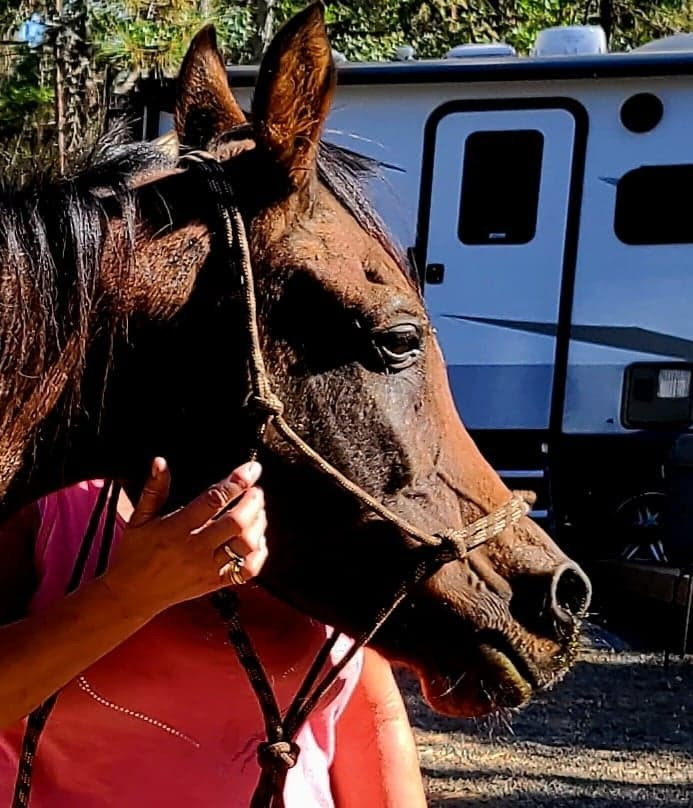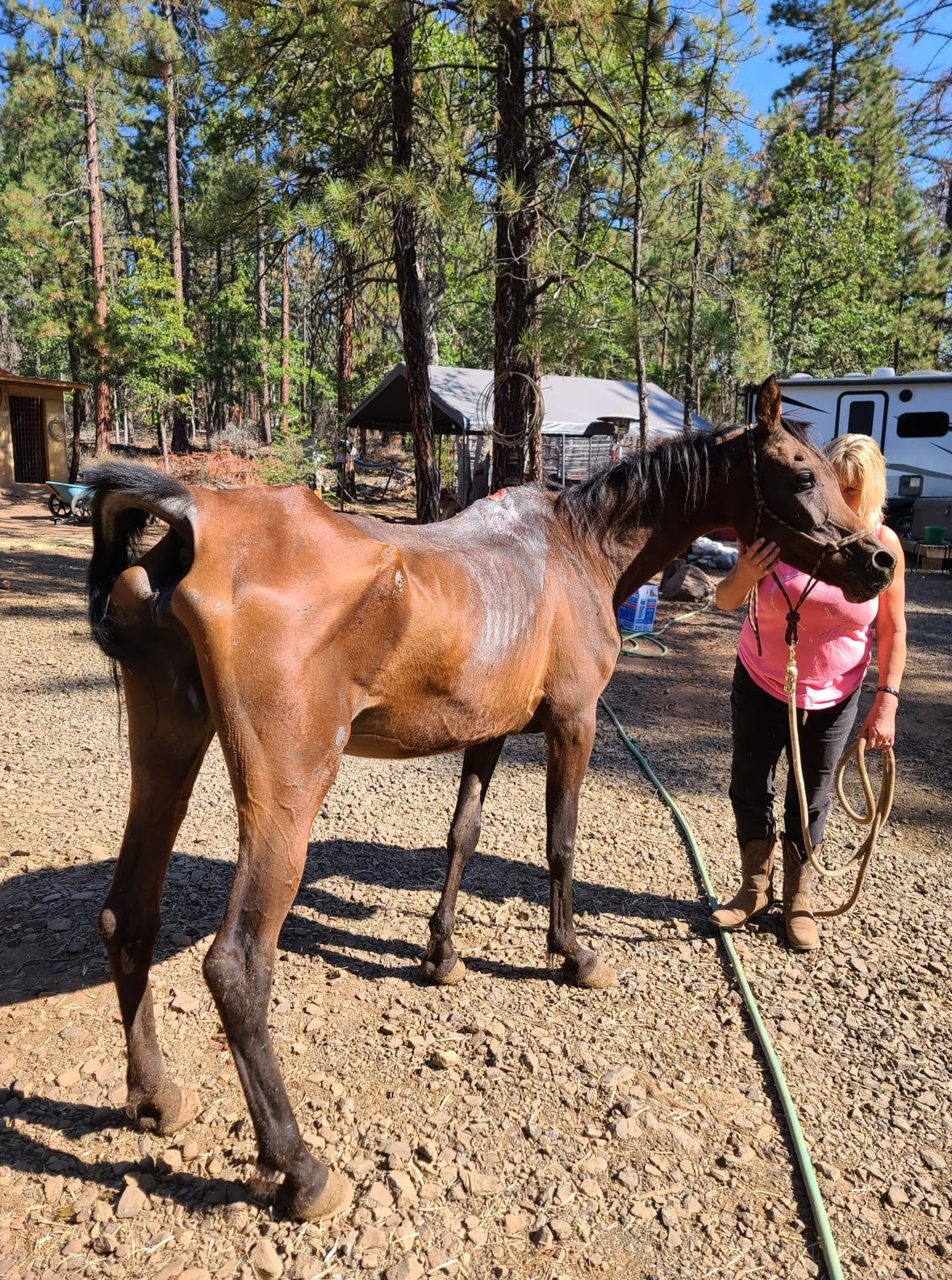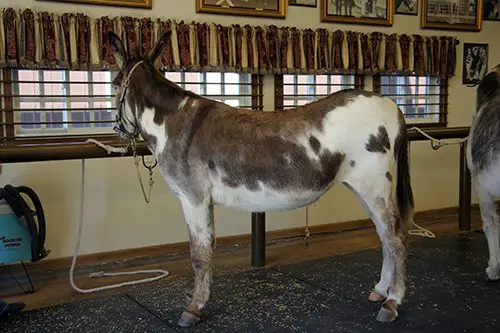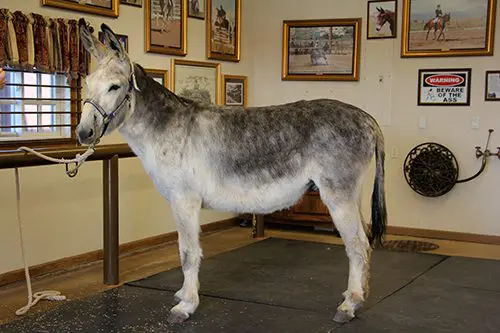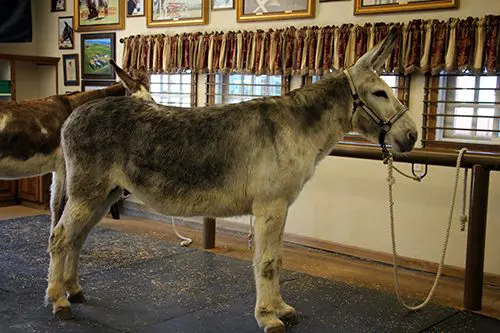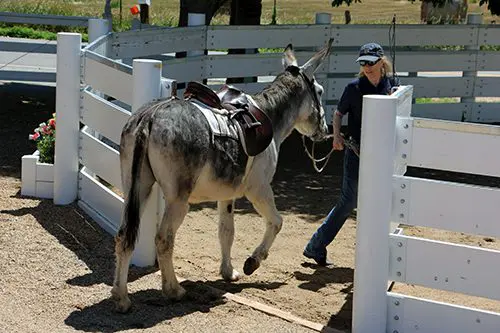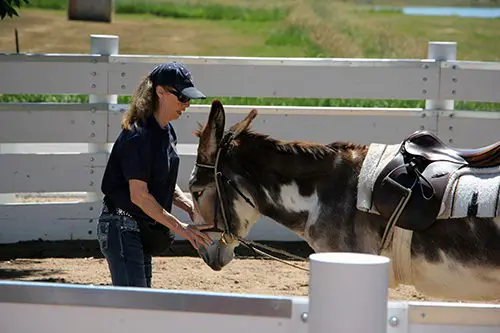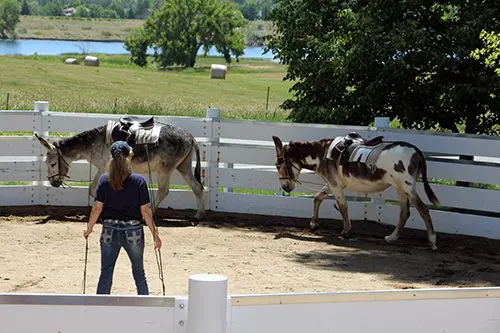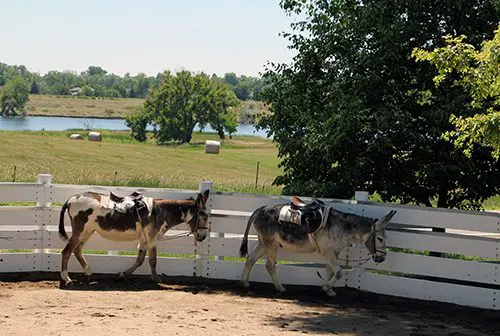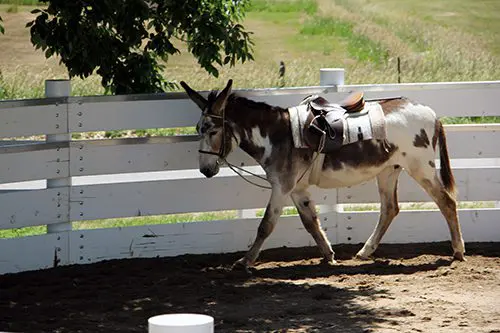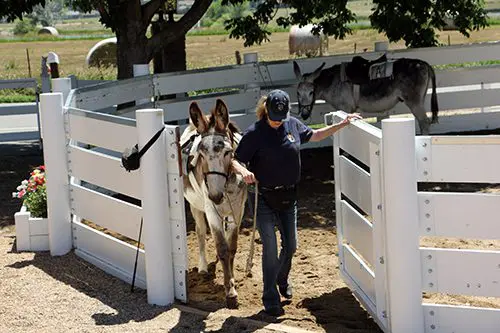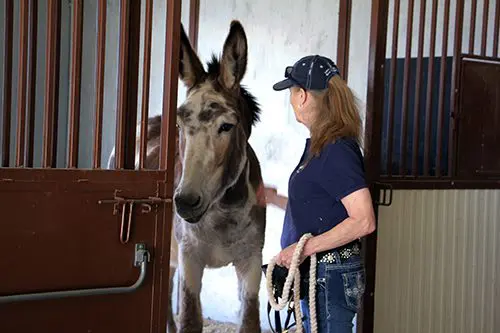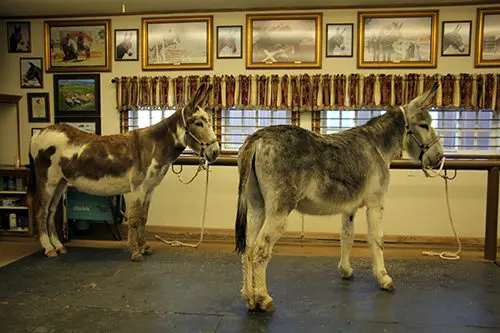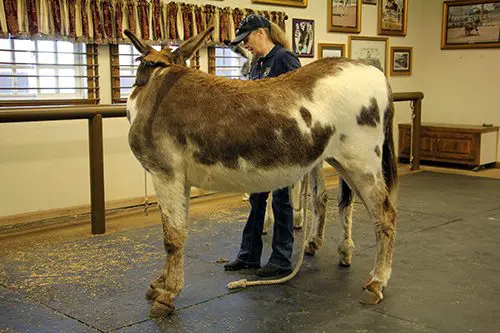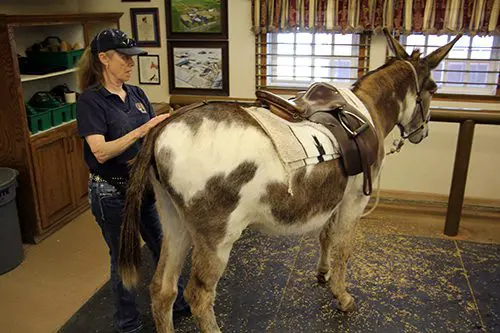MULE CROSSING: Rock and Roll: Diary of a Rescue, Part 1
By Meredith Hodges
 I first saw Rock and Roll at the National Western Stock Show in January of 2010. The two Belgian draft mules looked enormous in the 12′ X 12′ stalls in the holding area. They had been rescued from slaughter at an auction in Kiowa by my two friends, Fran and Larry Howe, owners of the Bitterroot Mule Company in Bennett, Colorado. My friends explained why they couldn’t resist trying to help the two draft mules. They were the largest mules any of us had ever seen. Roll was supposedly 16 years old at 17 1/2 hands and Rock supposedly 17 years old at 18 hands. Both mules were severely underweight. Rock had recently been treated for abscesses, which required the removal of two molars. The two draft mules stood quietly, seemingly unaffected, as we stared in total amazement. A rescue attempt was certainly worth trying.
I first saw Rock and Roll at the National Western Stock Show in January of 2010. The two Belgian draft mules looked enormous in the 12′ X 12′ stalls in the holding area. They had been rescued from slaughter at an auction in Kiowa by my two friends, Fran and Larry Howe, owners of the Bitterroot Mule Company in Bennett, Colorado. My friends explained why they couldn’t resist trying to help the two draft mules. They were the largest mules any of us had ever seen. Roll was supposedly 16 years old at 17 1/2 hands and Rock supposedly 17 years old at 18 hands. Both mules were severely underweight. Rock had recently been treated for abscesses, which required the removal of two molars. The two draft mules stood quietly, seemingly unaffected, as we stared in total amazement. A rescue attempt was certainly worth trying.
In August of 2010, I saw Roll again at the Larimer County Fair. Larry drove him in the Single Hitch classes and, when I was able to speak to him, he and Fran told me Rock could not come to the show. He had come up lame. Roll had put on weight and was looking better than he had looked in January however, he still appeared to be stressed. Longears have been known to die from depression, so one of my main concerns was if Rock died, Roll could become depressed and might not live very long. Fran and Larry decided that this rescue was more than they could handle and asked if I would be interested in  taking the pair. I agreed, and after we had quickly made a suitable space for them, Rock and Roll were delivered to the Lucky Three Ranch on December 5th, 2010. One look at the way Rock was moving and we knew this was going to be difficult at best.
taking the pair. I agreed, and after we had quickly made a suitable space for them, Rock and Roll were delivered to the Lucky Three Ranch on December 5th, 2010. One look at the way Rock was moving and we knew this was going to be difficult at best.
Rock and Roll were obedient, but suspicious animals. Their eyes lacked expression and were cloudy in spots, and their coats were oily and dull, something that is not apparent in photographs. Their hooves looked irregularly trimmed and out of balance, with prevalent stress rings on all four feet of each mule. They had clearly been foundered more than once and their bodies were riddled with scar tissue. Roll listed to the right and walked with a twist to the right hind foot. Rock had to lift and swing his right hind leg to the side in order to walk forward. The leg appeared calcified and restricted in every joint. Neither mule could freely reach forward through the shoulders and hips, nor place each foot in a regular rhythmic fashion. There was muscle atrophy throughout their bodies, and their bellies hung from the spine, with no apparent musculature in the abdomen or over the top line. There was hope for some recovery with Roll, but when my well-respected equine masseuse, Joanne Lang, C.M.T. and I assessed Rock, we knew there would be limitations as to what could be done for him. We both knew we might be setting ourselves up for a broken heart, but for Roll’s sake, we agreed to try to make Rock comfortable for as long as we could.
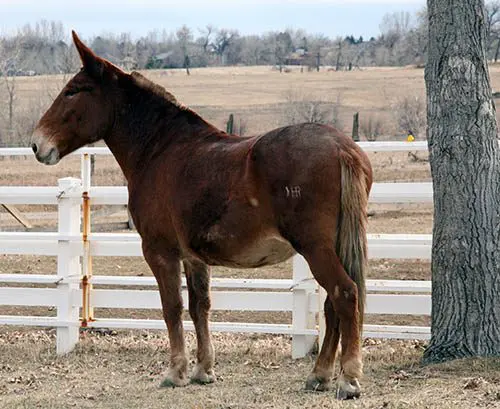 Before beginning therapy, Joanne and I gathered all the information we could on Rock and Roll. This was not an easy task, as there were no registration or health papers, only the information that Bitterroot Mule Company could provide. The pair was not eating very well, and by the way he was turning his nose up at the feed, I suspected Rock might even have ulcers. Fran and Larry told me what they had fed the mules. I promptly took them both off the feed that would clearly be, in my experience, too rich for them and put them on our standard equine diet. Because both mules were branded, we were able to identify the brands as coming from the Hunt Limousine Cattle Ranch in Elizabeth, Colorado. We later discovered that the Hunt Limousine Cattle Ranch had obtained Rock and Roll when they were just three years old from an Amish Family in Lancaster, Pennsylvania. Both Rock and Roll were out of sister Belgian mares, and by the same jack. Rock and Roll mostly pulled a wagon for birthday parties for 6 yr olds at the ranch. They also pulled the wagon for a nearby church so they could sing Christmas carols in the towns of Elizabeth and Kiowa, Colorado, and were also used to pull Grand Marshalls and other dignitaries in local parades.
Before beginning therapy, Joanne and I gathered all the information we could on Rock and Roll. This was not an easy task, as there were no registration or health papers, only the information that Bitterroot Mule Company could provide. The pair was not eating very well, and by the way he was turning his nose up at the feed, I suspected Rock might even have ulcers. Fran and Larry told me what they had fed the mules. I promptly took them both off the feed that would clearly be, in my experience, too rich for them and put them on our standard equine diet. Because both mules were branded, we were able to identify the brands as coming from the Hunt Limousine Cattle Ranch in Elizabeth, Colorado. We later discovered that the Hunt Limousine Cattle Ranch had obtained Rock and Roll when they were just three years old from an Amish Family in Lancaster, Pennsylvania. Both Rock and Roll were out of sister Belgian mares, and by the same jack. Rock and Roll mostly pulled a wagon for birthday parties for 6 yr olds at the ranch. They also pulled the wagon for a nearby church so they could sing Christmas carols in the towns of Elizabeth and Kiowa, Colorado, and were also used to pull Grand Marshalls and other dignitaries in local parades.
Rock and Roll, along with two other teams were well taken care of and loved deeply by the family who cared for the ranch. A ranch wife to one of the hands took the responsibility of scheduling routine farrier appointments and vaccinations for them and ten other ranch horses. Unfortunately the ranch was eventually in a position in 2002 when they had to be sold. The family who cared for them was “heart broke and sad.” At that point, they were healthy and weighed 2500 pounds each. What happened afterwards is still a mystery, but one thing was tragically clear—they were overworked, out of good posture and not properly fed. Many people just don’t realize that even big draft mules need the benefit of a healthy diet and a specialized exercise program, especially before starting work in harness.
Within days after changing their feed to our crimped oats mix with Sho Glo, Mazola corn oil and grass hay only, the two mules’ appetites improved. There was a drastic change in their coats and their eyes began to come alive. We gave them a small turnout area just off their runs and along the county road, so they could watch the people going by and the cattle grazing on the other side. Rock would go into the corner of the pasture and just stand and stare for hours, not moving until he was called back in.
 I noticed that Rock did not lie down or roll, but considering how neglected they had been, this didn’t really surprise me. Because of the muscle atrophy in his right hip, we decided that we should get started with Rock immediately. So, the very afternoon they were delivered, Rock got his first massage. He was tolerant of the massage, but we soon discovered that touching his face was out of the question. Both mules would shy away if anyone so much as raised a hand or made any small abrupt movement in their presence. We also noticed that Rock had a perpetual and distinctive worried “V” in his eyebrows over both eyes. A health check with our veterinarian was scheduled and we continued equine chiropractic, using the same equine chiropractor that was used when Fran and Larry first got Rock and Roll. After a couple of months of chiropractics, regular farrier and vet visits with massage and physical therapy done on a weekly basis, Rock was finally able to get down on his left side and roll. He and Roll then began to play!
I noticed that Rock did not lie down or roll, but considering how neglected they had been, this didn’t really surprise me. Because of the muscle atrophy in his right hip, we decided that we should get started with Rock immediately. So, the very afternoon they were delivered, Rock got his first massage. He was tolerant of the massage, but we soon discovered that touching his face was out of the question. Both mules would shy away if anyone so much as raised a hand or made any small abrupt movement in their presence. We also noticed that Rock had a perpetual and distinctive worried “V” in his eyebrows over both eyes. A health check with our veterinarian was scheduled and we continued equine chiropractic, using the same equine chiropractor that was used when Fran and Larry first got Rock and Roll. After a couple of months of chiropractics, regular farrier and vet visits with massage and physical therapy done on a weekly basis, Rock was finally able to get down on his left side and roll. He and Roll then began to play!
 Our farrier Dean Geesen came out to the Lucky Three and gave both mules their first official trims. Our support team agreed that it would be a long time before their feet would begin to look normal. During a farrier visit in March, we discovered that Rock had two old abscesses in his left front hoof. Dean was guarded about whether or not Rock’s hooves would ever be okay again. But Rock was a real trooper and although it was very difficult for him, he managed to yield all four feet when asked.
Our farrier Dean Geesen came out to the Lucky Three and gave both mules their first official trims. Our support team agreed that it would be a long time before their feet would begin to look normal. During a farrier visit in March, we discovered that Rock had two old abscesses in his left front hoof. Dean was guarded about whether or not Rock’s hooves would ever be okay again. But Rock was a real trooper and although it was very difficult for him, he managed to yield all four feet when asked.
When our veterinarian Greg Farrand checked his eyes, he found cloudiness and thickening over the corneas. He was put on a regimen of eye drops three times a day to stave off chronic abrasion of the eye. Within days, Rock was chasing bunnies around the small turnout pasture—no more standing in the corner! Greg also did a walking palpation to see if he could determine what was causing the lameness in Rock’s right hip. He thought he felt a fracture on the face of the pelvis, but there was no way to really tell exactly what was going on. To find out for certain, Rock would have to be taken to Colorado State University, sedated and turned upside down in order for any necessary radiograms or ultrasound tests to be performed. We all agreed that this process would be far too traumatic for him. We opted to just be
very careful and not to do any manual range-of-motion movements on that leg for fear of making it worse. Instead, I discovered a way to have Rock do range-of-motion exercises on his own during physical therapy and my adjustments worked well. Rock and Roll continued to improve. Roll even graduated from the leading core muscle exercises to the round pen core muscle exercises. Rock and Roll began to play and argue with each other. The pair seemed to be gaining strength and proprioception (body awareness), and both seemed to be feeling much better overall. After a very short time, both mules 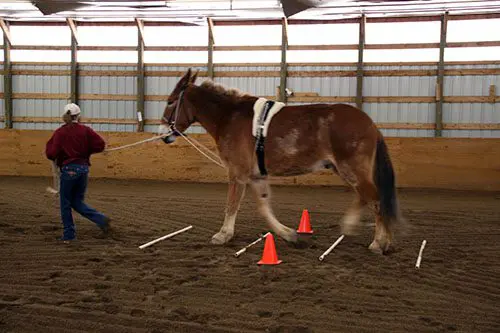 complied—on verbal commands alone—to correct their own balance and square up at every halt…because it felt good!
complied—on verbal commands alone—to correct their own balance and square up at every halt…because it felt good!
In mid-March, we had Rock’s feet x-rayed and it was found that there was 45 degrees of rotation in both hind feet. There was no rotation in front, although the front feet did have multiple stress rings, collapse of the hoof wall and were starting to exhibit seedy toes. Rock couldn’t stand on the four-inch blocks the vet used to x-ray him, so we made do with a couple of two-by–four boards. Even when the farrier worked on him, we would have to put Rock’s rear feet on an equine jack stand to trim him. After learning to successfully execute his balancing pattern during physical therapy, we noticed that the soles of Rock’s feet were beginning to wear away. When the x-rays came back, they showed that only a quarter of an inch of sole was left on the bottoms of each of his rotating hind feet. We then immediately got shoes on those back feet! We began a regimen of Thrush Buster and Rainmaker hoof dressing by Farnam on both mules’ hooves in order to help the hooves to begin to grow back in a healthy way. By April, Rock had grown three-eighths of an inch more sole on his hind feet and was actually trotting over his ground poles!
Now that Rock was feeling better, the worried “V” over his eyes began to disappear. He was actually getting up and lying down, but due to the difficulty he had, he began to get sores on his hocks that needed to be wrapped and tended with Panalog ointment. Although the sores were obviously very painful, Rock allowed me to wrap them and doctor them with little complaint. Once wrapped, he happily munched his oats reward for his stellar behavior and gently placed his forehead on my chest in a clear gesture of gratitude.
In Part 2 of Rock and Roll: Diary of a Rescue, Rock’s roller-coaster progress of victories and set-backs continues, as Roll slowly comes out of his shell and learns to trust us and—even more importantly—himself. Our regimen of compassion, patience and therapy goes on as Rock and Roll touch everyone’s soul by proving that they are ready and willing to give it everything they’ve got, right from their hearts.
To learn more about Meredith Hodges and her comprehensive all-breed equine training program, visit LuckyThreeRanch.com or call 1-800-816-7566. Check out her children’s website at JasperTheMule.com. Also, find Meredith on Facebook, YouTube, Pinterest, Instagram, MeWe and Twitter.
Covered in TRAINING MULES & DONKEY: A LOGICAL APPROACH TO TRAINING, TRAINING WITHOUT RESISTANCE, EQUUS REVISITED and A GUIDE TO RAISING & SHOWING MULES, ROCK & ROLL: DIARY OF A RESCUE 2-PT DOCUMENTARY (VOD & DVD) at www.luckythreeranchstore.com.
© 2012, 2016, 2020, 2024 Lucky Three Ranch, Inc. All Rights Reserved.







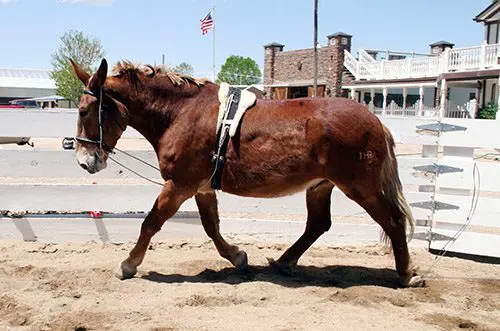











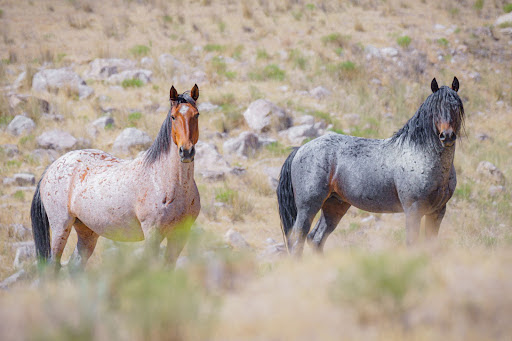
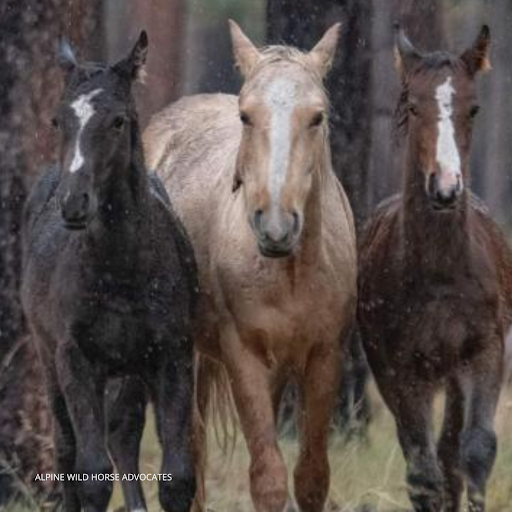
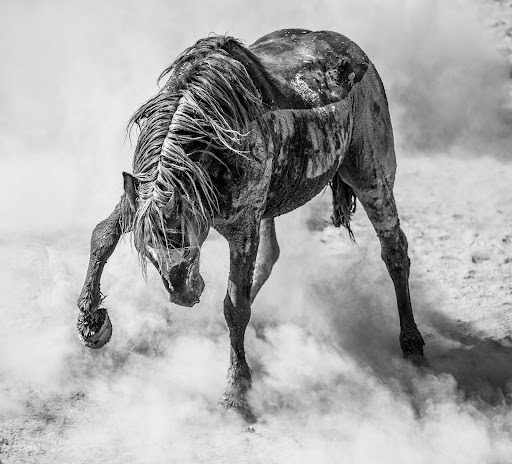
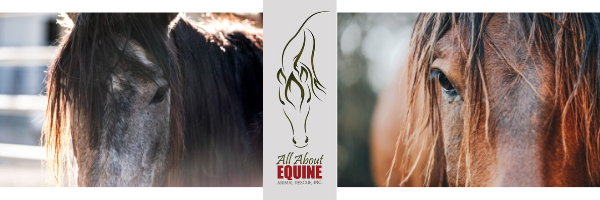
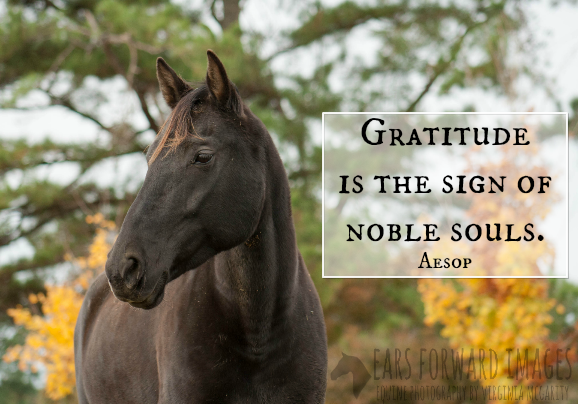
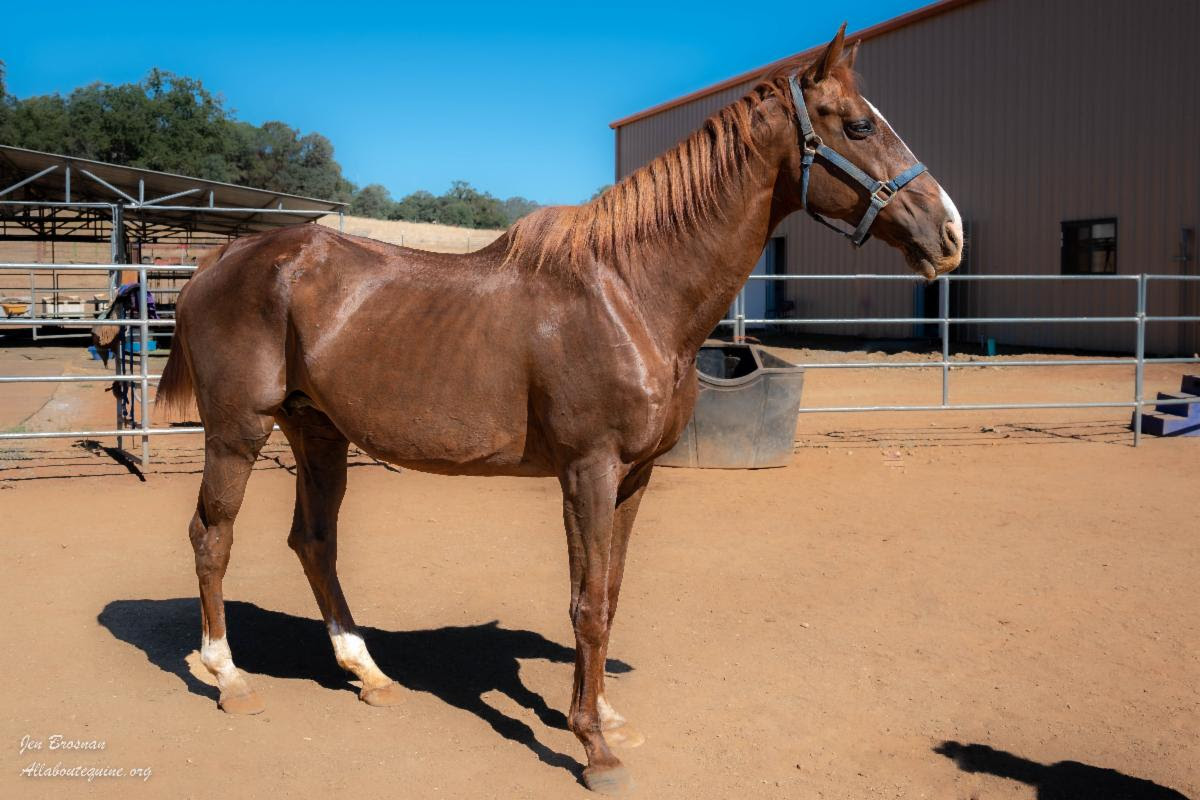
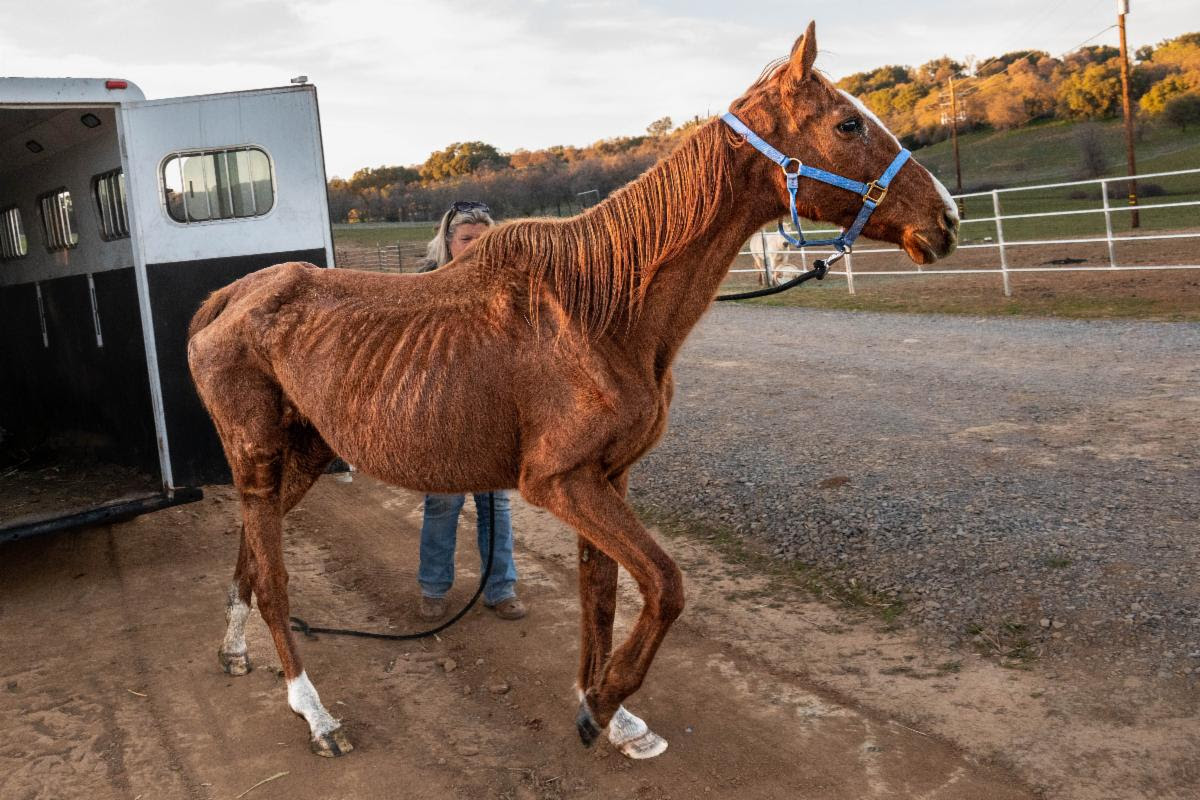
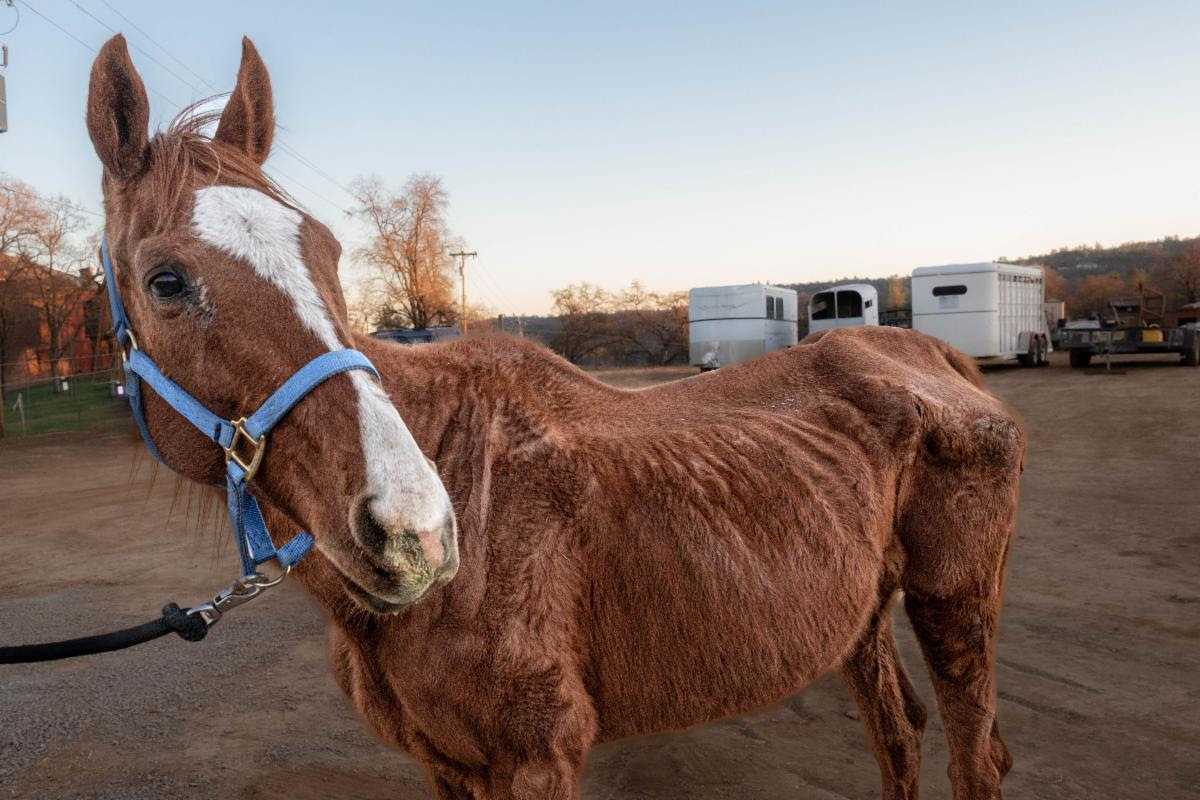
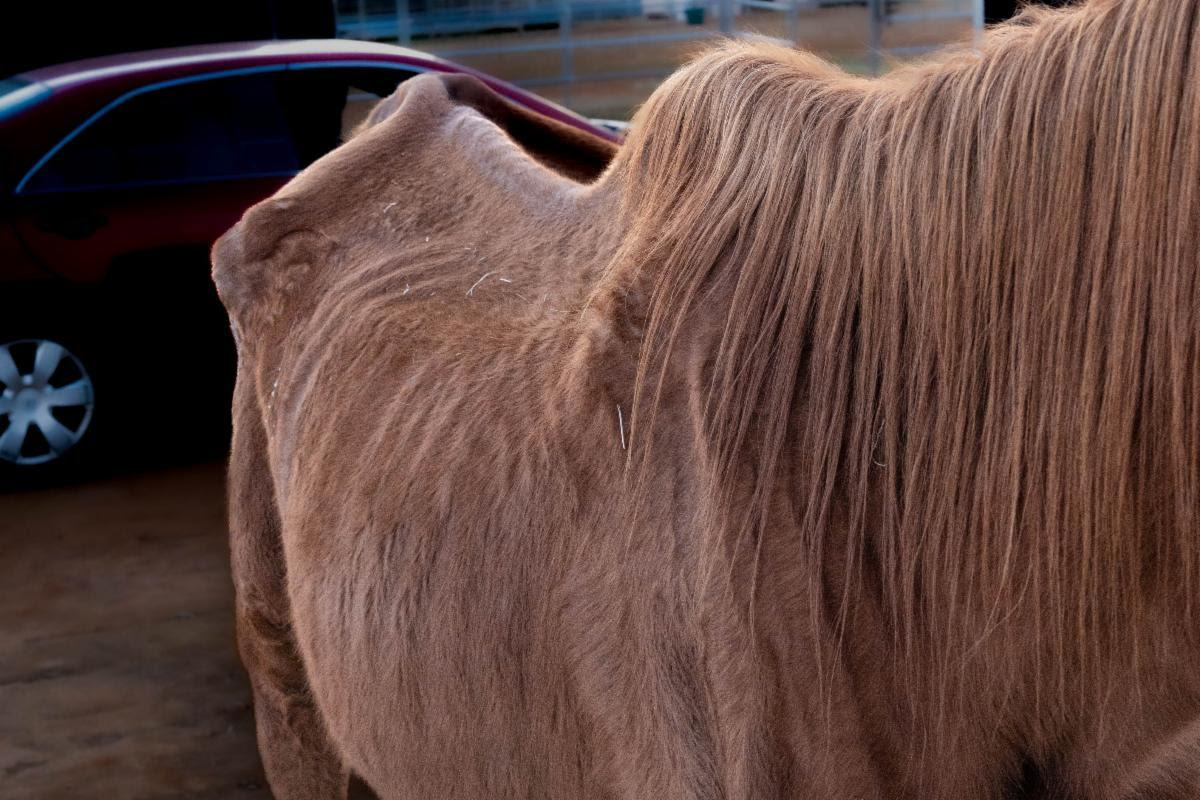
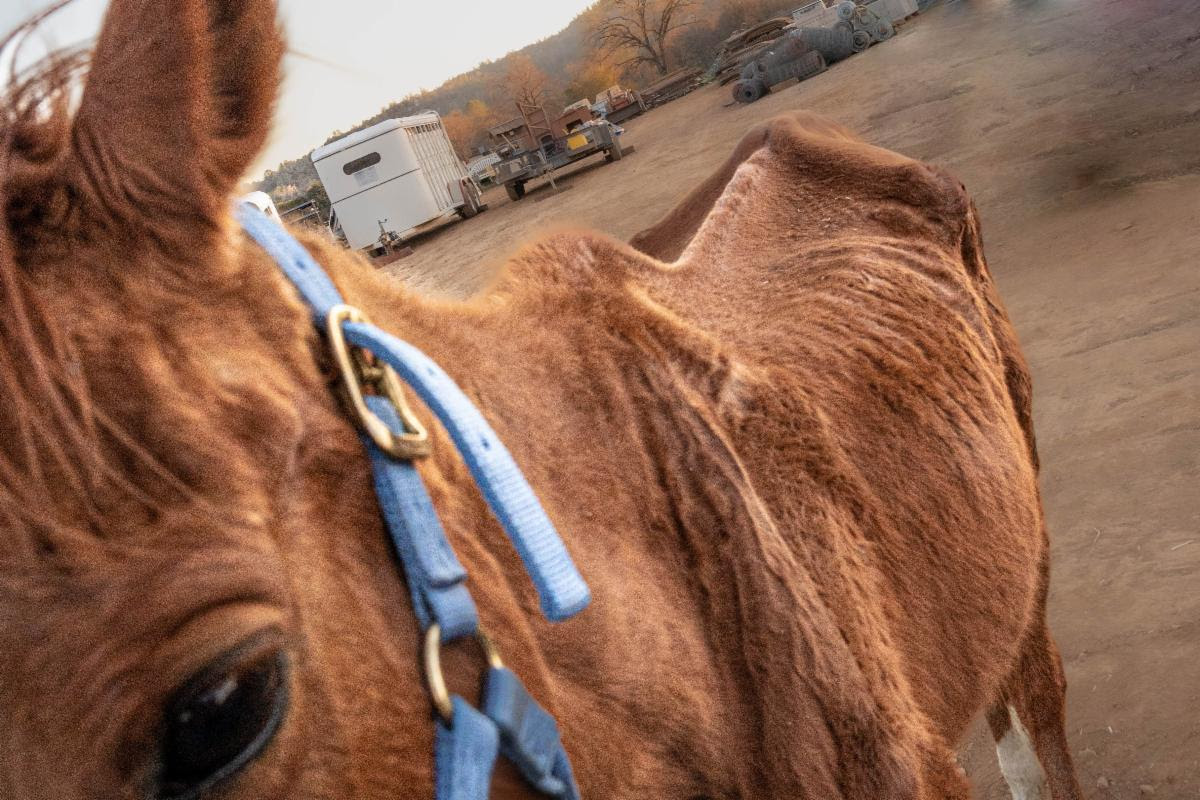
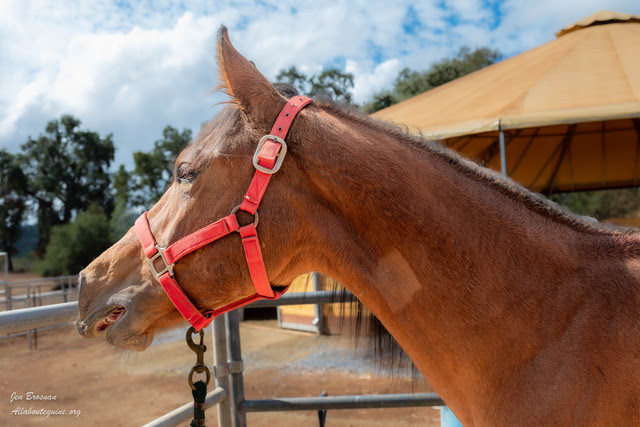
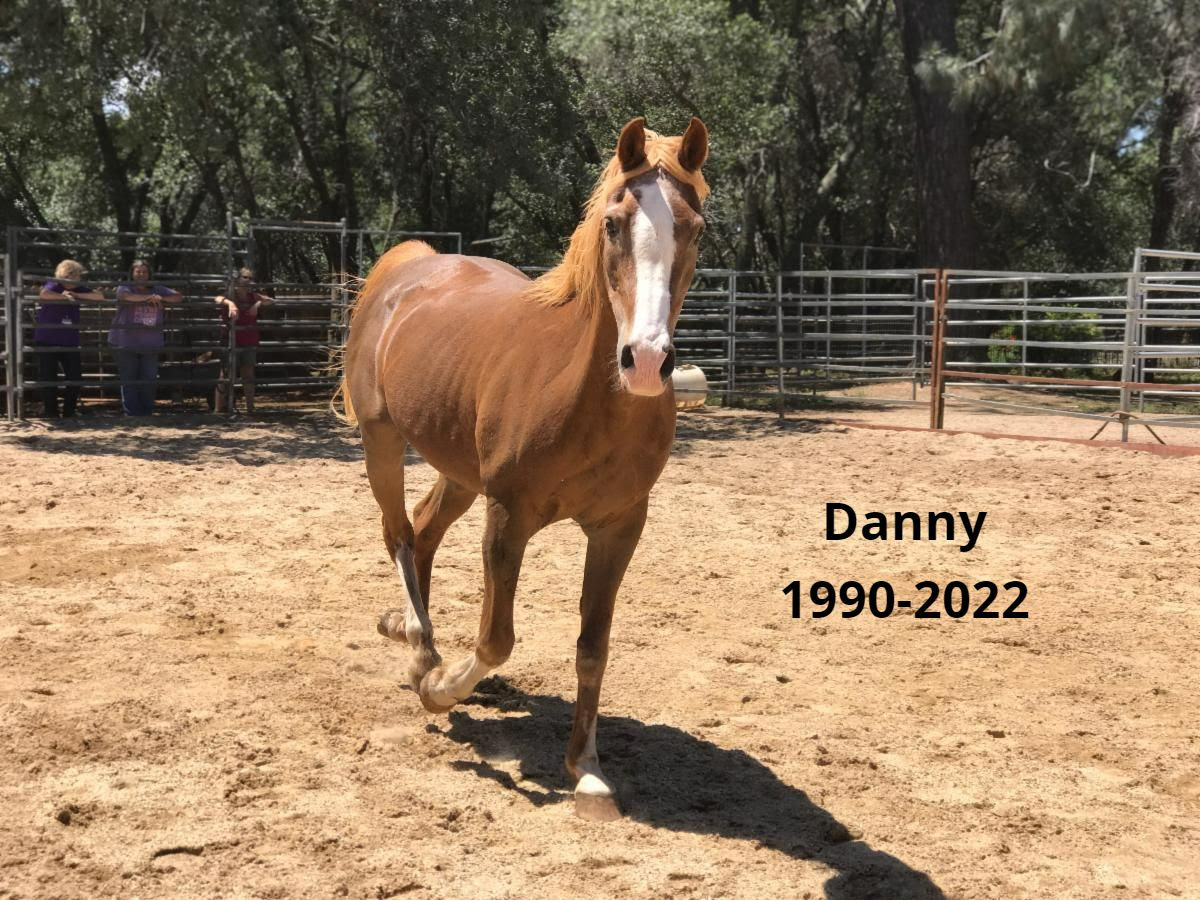
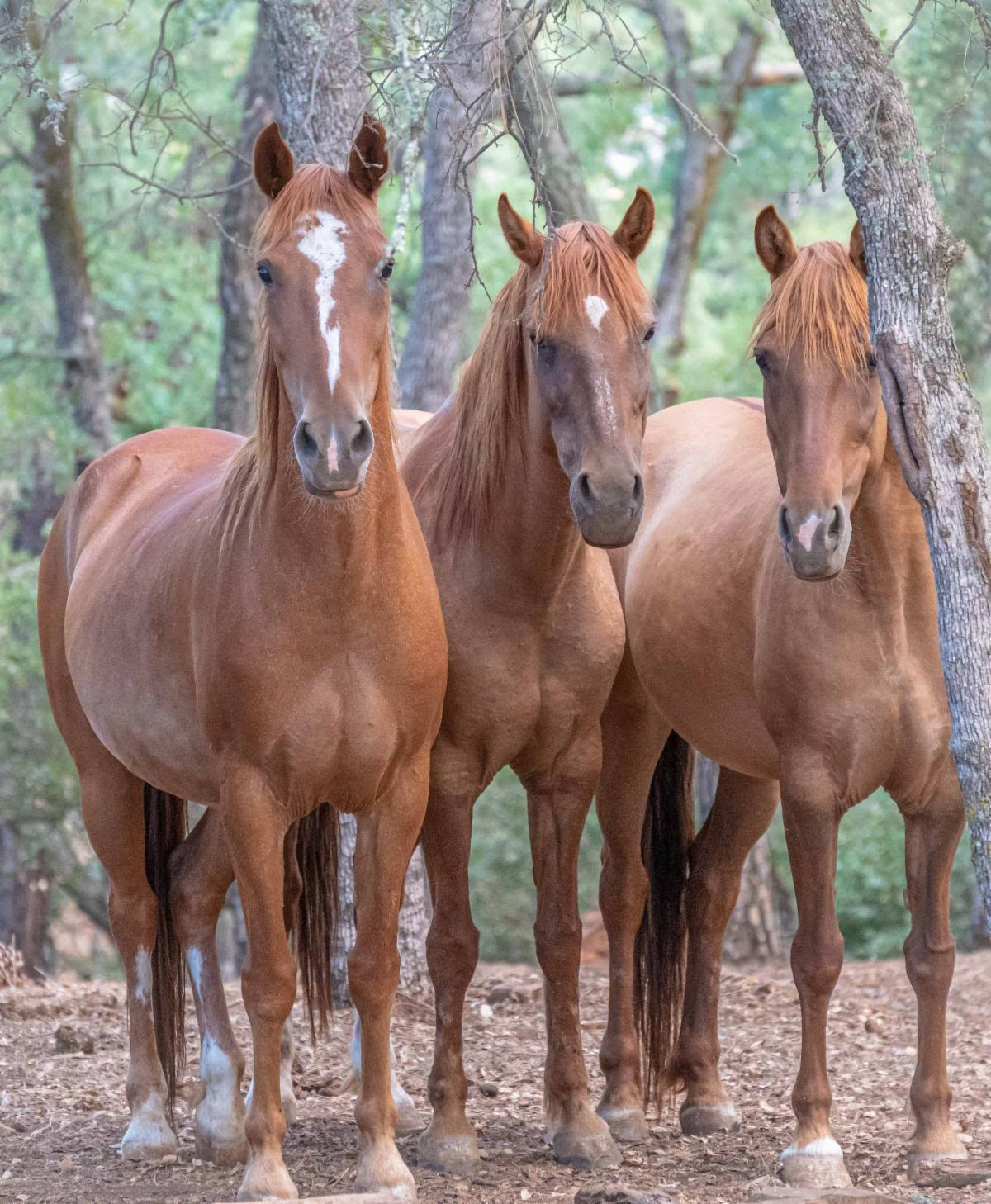
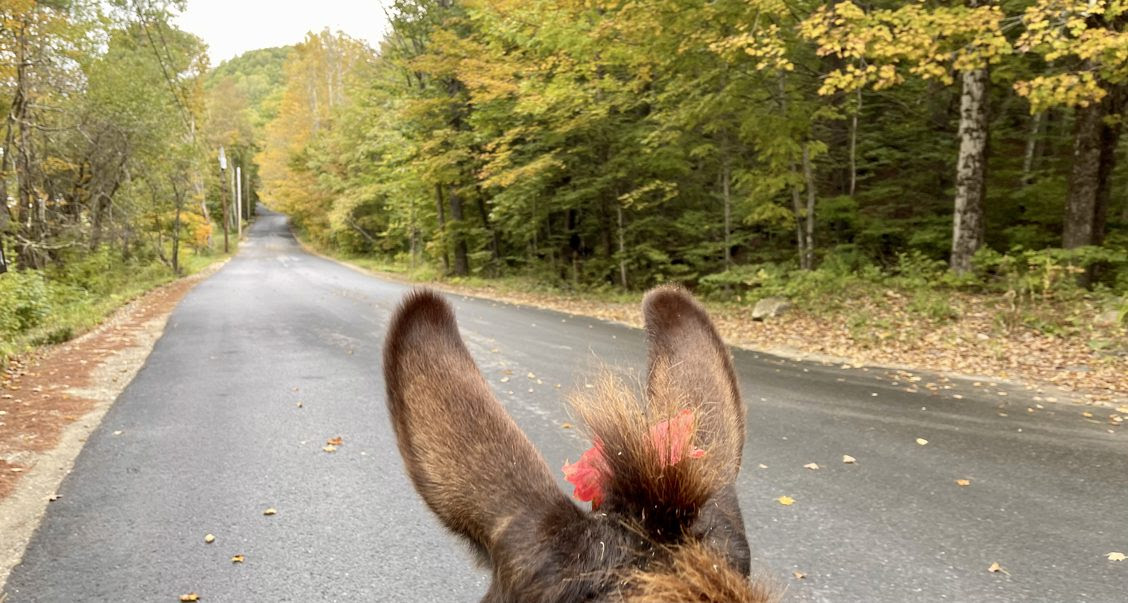







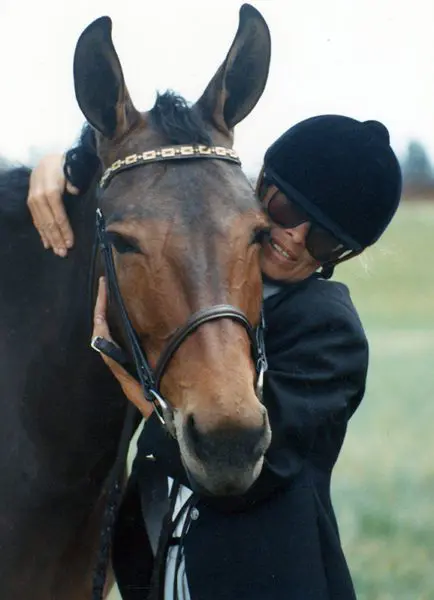 No training series would be complete without examination of the principles and philosophy behind the training techniques. The philosophy of my training techniques is based on the principle that we are not, in fact, training our equines. In fact, we are cultivating relationships with them by assigning meaning to our own body language that they can understand.
No training series would be complete without examination of the principles and philosophy behind the training techniques. The philosophy of my training techniques is based on the principle that we are not, in fact, training our equines. In fact, we are cultivating relationships with them by assigning meaning to our own body language that they can understand.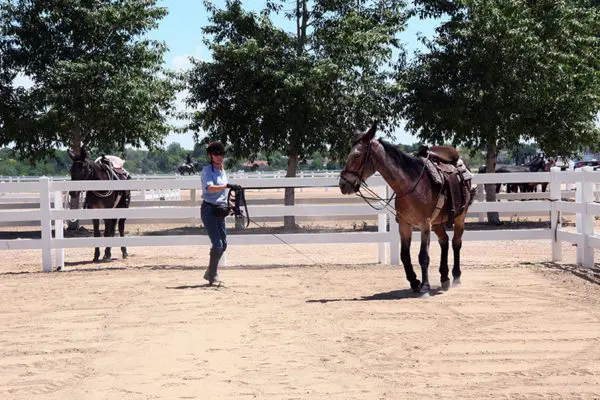 For instance, we had a 3-year-old mule learning to lunge without the benefit of the round pen. The problem was that she refused to go around you more than a couple of times without running off. Assess the situation first by brainstorming all the probable reasons she might keep doing such an annoying thing. Is she frightened? Is she bored? Is she mischievous? Has she been calm and accepting of most things until now? And most important, is my own body language causing this to occur?
For instance, we had a 3-year-old mule learning to lunge without the benefit of the round pen. The problem was that she refused to go around you more than a couple of times without running off. Assess the situation first by brainstorming all the probable reasons she might keep doing such an annoying thing. Is she frightened? Is she bored? Is she mischievous? Has she been calm and accepting of most things until now? And most important, is my own body language causing this to occur?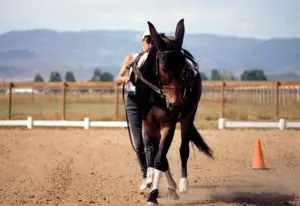 As mental changes occur, so do physical changes. As muscles develop and coordination gets better, the animal will gain confidence. As a trainer, you will need to do less and less to cause certain movements. For example, in the case of the leg yield, you may have to turn your mule’s head a little in the opposite direction to get him to step sideways and forward. As he becomes stronger, more coordinated, and understands your request, you can then begin to straighten his body more with less effort. Granted, we have begun by doing this the wrong way, yet we have put our mule “on the road” to the right way. We have assimilated an action in response to our leg that can now be perfected over time. In essence, you have simply said, “First you learn to move away from my leg, then you can learn to do it gracefully!”
As mental changes occur, so do physical changes. As muscles develop and coordination gets better, the animal will gain confidence. As a trainer, you will need to do less and less to cause certain movements. For example, in the case of the leg yield, you may have to turn your mule’s head a little in the opposite direction to get him to step sideways and forward. As he becomes stronger, more coordinated, and understands your request, you can then begin to straighten his body more with less effort. Granted, we have begun by doing this the wrong way, yet we have put our mule “on the road” to the right way. We have assimilated an action in response to our leg that can now be perfected over time. In essence, you have simply said, “First you learn to move away from my leg, then you can learn to do it gracefully!”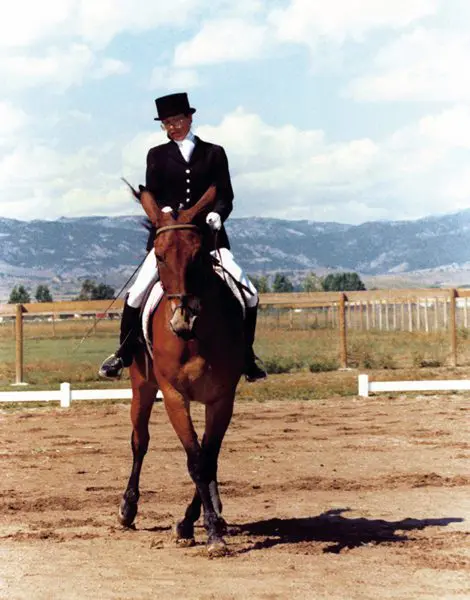 In training horses and mules, there is really little difference in one’s techniques or approach, provided we maintain patience and understanding and a good rewards system. The major difference between these two equines is their ability to tolerate negative reinforcement, or punishment. The mule, being part donkey, does not tolerate punitive action very well unless he is fully aware that the fault was his own and the punishment is fair. For instance, you ask for a canter lead and your mule keeps trotting, one good smack with the whip, or one good gig with the spurs, is negative reinforcement that will bring about the desired response, but be careful of an over-reaction from an overdone cue. More than one good smack or gig could cause either a runaway or an extremely balky animal. This kind of resistance comes from the donkey and requires a much different approach when training donkeys. The horse part of the mule allows us an easier time of overcoming this type of resistance in mules, making them different and easier to train than donkeys.
In training horses and mules, there is really little difference in one’s techniques or approach, provided we maintain patience and understanding and a good rewards system. The major difference between these two equines is their ability to tolerate negative reinforcement, or punishment. The mule, being part donkey, does not tolerate punitive action very well unless he is fully aware that the fault was his own and the punishment is fair. For instance, you ask for a canter lead and your mule keeps trotting, one good smack with the whip, or one good gig with the spurs, is negative reinforcement that will bring about the desired response, but be careful of an over-reaction from an overdone cue. More than one good smack or gig could cause either a runaway or an extremely balky animal. This kind of resistance comes from the donkey and requires a much different approach when training donkeys. The horse part of the mule allows us an easier time of overcoming this type of resistance in mules, making them different and easier to train than donkeys.


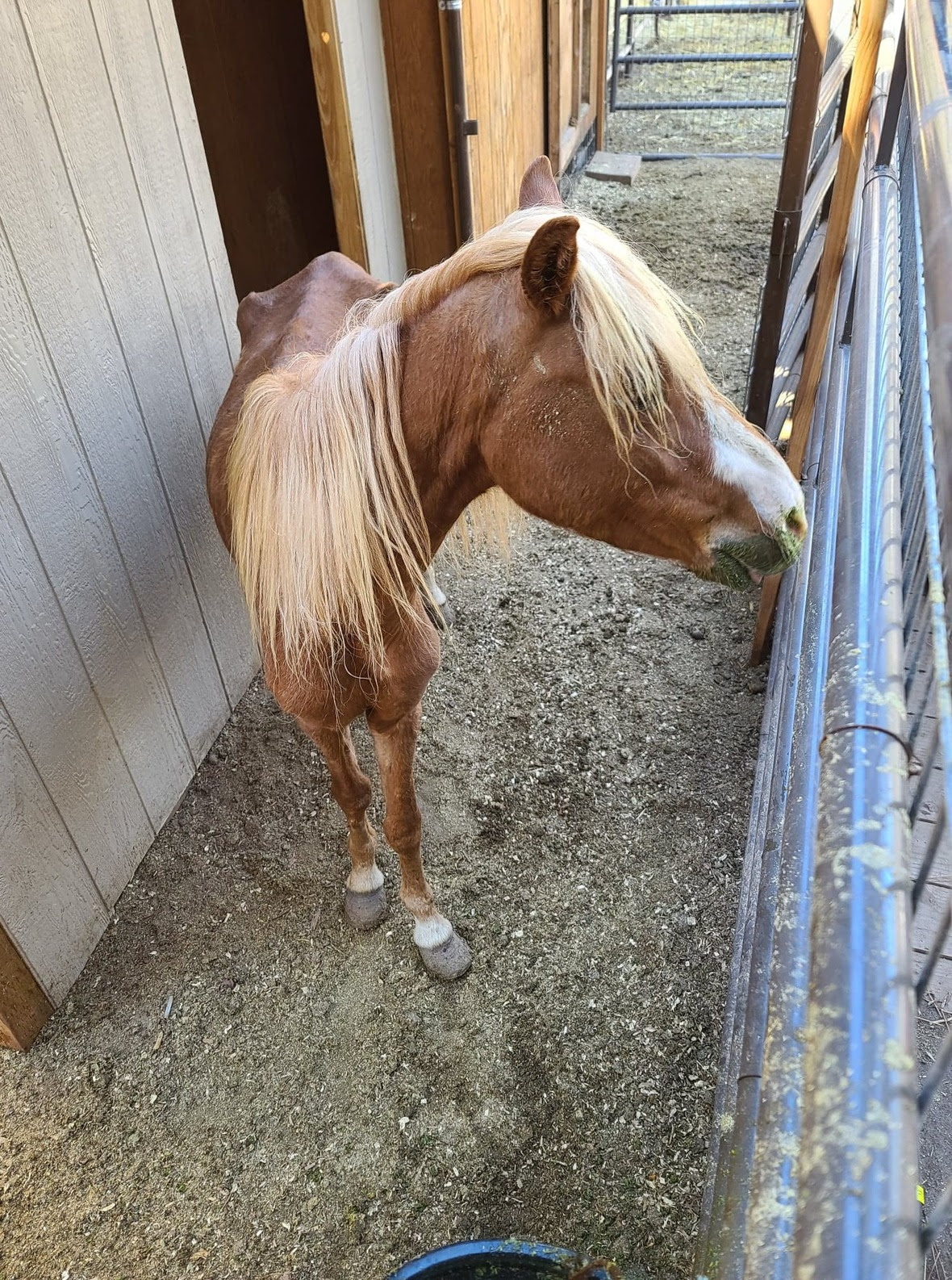 SPARKLES Update
SPARKLES Update